Middle East and Africa

Turkey

Tunis

Egypt

Jebel Shammar

Nejd

Tripoli 11 The most commonly reported flag from the period. Flags with green, white and red stripes also seem to have been used. Probably flown exclusively on ships. The Turkish flag was the official national flag.

Morocco 22 Flown over the palace in Rabat and on ships. Military flags on land were often dectorated with a yellow or green octagram.

Muscat and Oman · Zanzibar · Bahrain 33 Arab monarchies, especially those in and around the Gulf, flew plain red flags from their ships. These weren't quite "national flags" in the modern sense, but European powers tended to view them that way.

Ras al-Khaimah · Sharjah 44 Officially all of the Trucial States were supposed to fly a square red flag with a thick white border. In practice this flag became exclusively associated with the Al Qasimi dynasty. The other states mostly flew plain red flags.

Madagascar

Persia

Mount Lebanon

Futa Jallon

Sokoto Caliphate
green flag of Islam 55 Flown by exclusively by the sultan as a symbol of religious authority. Not really a "national flag" as we'd understand it in modern terms. The sultan also gave white flags to his vassal emirs within the Caliphate.

Orange Free State

South African Republic (Transvaal)
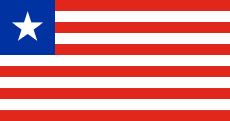
Liberia
Western Europe

France

Italy
national flag 66 Flown by private citizens and merchant ships. The "Italian Social Republic", the Nazi puppet regime in the north, flew the plain tricolour as a national flag and had a war flag with an eagle gripping a fasces. The anti-fascist Italian partisans flew either plain tricolours or tricolours with a white or red star on the middle stripe.

Italy
state flag 77 Flown by the government and navy.
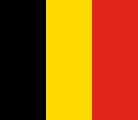
Belgium

Austria
Imperial colours 88 The dynastic colours of the Hapsburg monarchy, often used as a flag on land.

Austria
naval flag 99 Flown by navy ships. Direct predecessor of the modern Austrian flag.

Netherlands
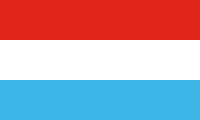
Luxembourg

Germany

Spain

Andorra
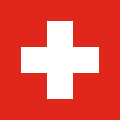
Switzerland
army flag 1010 Flag of the federal army, treated as an unofficial national flag.

Denmark
national flag 1111 Allowed to be flown by anyone.
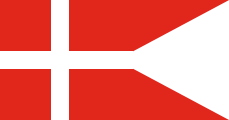
Denmark
sovereign flag 1212 Flown by the royal house, the government, and the armed forces. Also granted to a select list of private institutions and companies.

Norway
merchant flag 1313 Allowed to be flown by anyone. The union mark in the top-left corner of the flag was flown on its own as a joint diplomatic flag for Sweden and Norway.
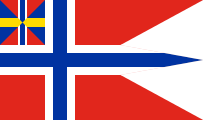
Norway
state flag 1414 Flown only on state-owned buildings and naval ships.

Sweden
merchant flag 1515 Allowed to be flown by anyone. The union mark in the top-left corner of the flag was flown on its own as a joint diplomatic flag for Sweden and Norway.

Sweden
war flag 1616 Flown on government buildings and by the military.

Greece
land flag 1717 Flown on land within Greece. The military flag had a crown in the centre of the cross.

Greece
sea flag 1818 Flown at sea and abroad. The naval ensign had a crown in the centre of the cross.
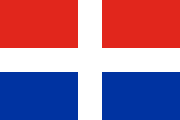
Samos
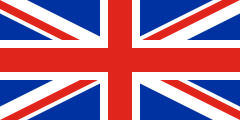
United Kingdom
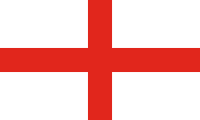
England

Scotland

Jersey

San Marino

Liechtenstein
princely flag 1919 Flown by the prince, and unofficially as a national flag.

Portugal

Malta
traditional flag 2020 Flown unofficially, mostly by civilian ships.

Monaco

Catalonia

Cornwall

Corsica
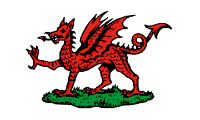
Wales
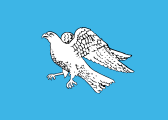
Iceland

Ireland
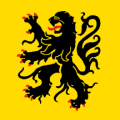
Flanders

Heligoland
Eastern Europe

Russia
Imperial standard 2121 The flag of the Emperor, often regarded as the Russian national flag during the period.

Russia
armorial flag 2222 Flown on government buildings, especially military buildings, and as patriotic decoration.

Russia
trade flag 2323 Flown by merchant ships.
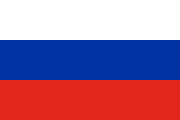
Carniola
national colours 2424 Designated as the official colours of the Austrian crown land of Carniola. Regarded as the unofficial national flag of Slovenia.

Slovakia 2525 Flown by advocates of Slovakian independence. The "Upper Hungary" region did not have an official flag.

Croatia and Slavonia

Serbia
national flag 2626 Allowed to be flown by anyone.

Serbia
state flag 2727 Flown the government and armed forces.

Hungary

Romania
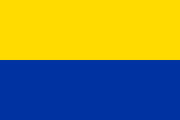
Ukraine 2828 Flown by Ukrainian nationalists. The order of colours wasn't fixed.
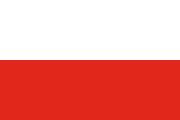
Bohemia
state colours 2929 Designated as the official colours of the Austrian crown land of Bohemia. Not an official flag, but informally regarded as a Czech national symbol. A white flag with the Bohemian coat of arms was also sometimes used.

Montenegro
batallion flag 3030 Flown by the prince and the military.

Poland
banner 3131 The former royal banner of Poland, no longer official but still used as an informal national symbol.
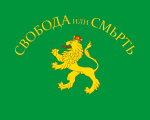
Bulgaria 3232 A typical flag flown by Bulgarian nationalists and revolutionaries in the pre-independence period. The flag would sometimes have different inscriptions or colours, but a golden lion on green was a common element. The slogan here reads "Freedom or Death!"
South Asia and the Indian Ocean

Hyderabad

Jammu and Kashmir 3333 The maharaja's flag had yellow stripes at the top and bottom.

Nepal

Jhabua 3434 The raja's flag was rectangular

Dewas

Kota
princely flag 3535 Flown by the Maharao and also used as a state flag. The flag was sometimes much longer.

Maldive Islands

Kishangarh

Sailana

Ajaigarh 3636 The reverse side of the flag showed a moon and a flower.

Mewar 3737 Mewar had a number of reported princely banners which were also sometimes used as state flags. The most common one had a large yellow sun and a blue katar dagger.

Porbandar
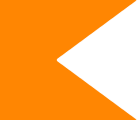
Kolhapur 3838 Kolhapur flew the Maratha saffron banner as a state flag. The maharaja had a diagonally-divided red and orange flag.

Dhar

Jaora

Jaipur

Alwar

Idar

Sirohi

Jodhpur

Gwalior
princely flag 3939 Flag of the maharaja, also used as a state flag. Plain saffron flags were also sometimes flown.

Jaisalmer

Bikaner

Banswara

Dholpur

Rajpipla
princely flag 4040 Flown by the maharaja and often used as a state flag.

Rajpipla
national flag 4141 Allowed to be flown by civilians.

Indore 4242 Inland river boats flew a triangular pennant in the same colours.

Kalat

Travancore

Manipur

Rajgarh

Sitamau 4343 The Raja's flag had a red sun

Bundi

Alirajpur

Khairpur
East, Central and Southeast Asia

Japan

China 4444 Flown by naval ships. The merchant flag was red with a yellow circle.

Cambodia

Siam

Luang Prabang
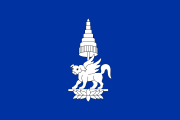
Champassak

Burma

Kelantan · Perak · Terengganu 4545 Malay monarchs often flew plain white flags. These standards eventually evolved into individual state flags as more colours and symbols were added.

Jambi
sultan's flag 4646 Flown by the sultan and by naval ships.
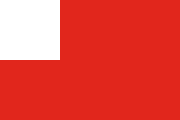
Jambi
nobles' flag 4747 Flown by nobles at sea.

Jambi
merchant flag 4848 Flown by commoner merchants at sea.

Pahang
sultan's flag 4949 Flown by the sultan.

Brunei
sultan's flag 5050 Flown by the sultan and also used as an unofficial state flag.

Sarawak

Selangor

Perlis

Johor
state flag 5151 Flown by the sultan and on naval ships.

Johor
merchant flag 5252 Flown by merchant ships and sometimes used by civilians as an alternate national flag.

Kedah

Kashgaria

Sulu 5353 Reported flag from this era. It's exact use isn't known.
Oceania

Samoa

Tonga

ʻUvea

Rimatara

Tahiti

Rarotonga

Mangareva

Rurutu

Huahine

Raʻiatea
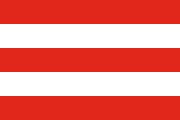
Bora Bora

Tahuata

Hawaiʻi

Australia

New Zealand
blue ensign 5454 Officially only flown on government ships, but often used as a national flag.

New Zealand
unofficial flag 5555 The former flag of the United Tribes of New Zealand, which remained in use as an unofficial symbol of the country.
North America
Latin America

Brazil
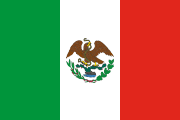
Mexico

Peru
national ensign 5858 Flown by the government, the navy, the national police, and national sports teams. Raised at major ceremonies. The army uses a similar flag with a different coat of arms.

Peru
national flag 5959 Allowed to be flown by anyone.

Guatemala

Argentina

Honduras

Nicaragua

Paraguay
front side

Paraguay
back side
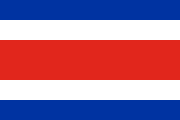
Costa Rica
national flag 6060 The most common Costa Rican flag. Officially designated for private citizens, but in practice often used on government buildings and schools too.

Costa Rica
national ensign 6161 Flown by the government and by diplomatic missions, although also used sometimes by private citizens.

Cuba 6262 Flown by Cuban nationalists and revolutionaries who sought independence from Spain.

Salvador

Uruguay

Haiti

Dominican Republic

Puerto Rico 6363 Flown by Puerto Rican nationalists and revolutionaries who sought independence from Spain.

Chile

Bolivia
state flag 6464 Flown by the government and armed forces.

Bolivia
national flag 6565 Allowed to be flown by anyone.
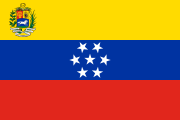
Venezuela
national ensign 6666 Flown by the government and armed forces, and unofficially used by many private citizens.

Venezuela
national flag 6767 Allowed to be flown by anyone.

Colombia

Ecuador
Other International and Cultural Flags

Red Cross
Events of 1874
ACEH • Aceh was conquered by the Dutch on January 24.
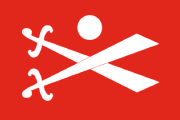



FIJI • Fiji was annexed by the British on October 6.



SPAIN • The monarchy was restored and the crown returned to the flag on December 29



TRANSVAAL • The South African Republic briefly abandoned its Vierkleur flag in favour of the Voortrekker flag on October 24. The change would be undone in less than a year.



Notes
1 The most commonly reported flag from the period. Flags with green, white and red stripes also seem to have been used. Probably flown exclusively on ships. The Turkish flag was the official national flag. ↩
2 Flown over the palace in Rabat and on ships. Military flags on land were often dectorated with a yellow or green octagram. ↩
3 Arab monarchies, especially those in and around the Gulf, flew plain red flags from their ships. These weren't quite "national flags" in the modern sense, but European powers tended to view them that way. ↩
4 Officially all of the Trucial States were supposed to fly a square red flag with a thick white border. In practice this flag became exclusively associated with the Al Qasimi dynasty. The other states mostly flew plain red flags. ↩
5 Flown by exclusively by the sultan as a symbol of religious authority. Not really a "national flag" as we'd understand it in modern terms. The sultan also gave white flags to his vassal emirs within the Caliphate. ↩
6 Flown by private citizens and merchant ships. The "Italian Social Republic", the Nazi puppet regime in the north, flew the plain tricolour as a national flag and had a war flag with an eagle gripping a fasces. The anti-fascist Italian partisans flew either plain tricolours or tricolours with a white or red star on the middle stripe. ↩
7 Flown by the government and navy. ↩
8 The dynastic colours of the Hapsburg monarchy, often used as a flag on land. ↩
9 Flown by navy ships. Direct predecessor of the modern Austrian flag. ↩
10 Flag of the federal army, treated as an unofficial national flag. ↩
11 Allowed to be flown by anyone. ↩
12 Flown by the royal house, the government, and the armed forces. Also granted to a select list of private institutions and companies. ↩
13 Allowed to be flown by anyone. The union mark in the top-left corner of the flag was flown on its own as a joint diplomatic flag for Sweden and Norway. ↩
14 Flown only on state-owned buildings and naval ships. ↩
15 Allowed to be flown by anyone. The union mark in the top-left corner of the flag was flown on its own as a joint diplomatic flag for Sweden and Norway. ↩
16 Flown on government buildings and by the military. ↩
17 Flown on land within Greece. The military flag had a crown in the centre of the cross. ↩
18 Flown at sea and abroad. The naval ensign had a crown in the centre of the cross. ↩
19 Flown by the prince, and unofficially as a national flag. ↩
20 Flown unofficially, mostly by civilian ships. ↩
21 The flag of the Emperor, often regarded as the Russian national flag during the period. ↩
22 Flown on government buildings, especially military buildings, and as patriotic decoration. ↩
23 Flown by merchant ships. ↩
24 Designated as the official colours of the Austrian crown land of Carniola. Regarded as the unofficial national flag of Slovenia. ↩
25 Flown by advocates of Slovakian independence. The "Upper Hungary" region did not have an official flag. ↩
26 Allowed to be flown by anyone. ↩
27 Flown the government and armed forces. ↩
28 Flown by Ukrainian nationalists. The order of colours wasn't fixed. ↩
29 Designated as the official colours of the Austrian crown land of Bohemia. Not an official flag, but informally regarded as a Czech national symbol. A white flag with the Bohemian coat of arms was also sometimes used. ↩
30 Flown by the prince and the military. ↩
31 The former royal banner of Poland, no longer official but still used as an informal national symbol. ↩
32 A typical flag flown by Bulgarian nationalists and revolutionaries in the pre-independence period. The flag would sometimes have different inscriptions or colours, but a golden lion on green was a common element. The slogan here reads "Freedom or Death!" ↩
33 The maharaja's flag had yellow stripes at the top and bottom. ↩
34 The raja's flag was rectangular ↩
35 Flown by the Maharao and also used as a state flag. The flag was sometimes much longer. ↩
36 The reverse side of the flag showed a moon and a flower. ↩
37 Mewar had a number of reported princely banners which were also sometimes used as state flags. The most common one had a large yellow sun and a blue katar dagger. ↩
38 Kolhapur flew the Maratha saffron banner as a state flag. The maharaja had a diagonally-divided red and orange flag. ↩
39 Flag of the maharaja, also used as a state flag. Plain saffron flags were also sometimes flown. ↩
40 Flown by the maharaja and often used as a state flag. ↩
41 Allowed to be flown by civilians. ↩
42 Inland river boats flew a triangular pennant in the same colours. ↩
43 The Raja's flag had a red sun ↩
44 Flown by naval ships. The merchant flag was red with a yellow circle. ↩
45 Malay monarchs often flew plain white flags. These standards eventually evolved into individual state flags as more colours and symbols were added. ↩
46 Flown by the sultan and by naval ships. ↩
47 Flown by nobles at sea. ↩
48 Flown by commoner merchants at sea. ↩
49 Flown by the sultan. ↩
50 Flown by the sultan and also used as an unofficial state flag. ↩
51 Flown by the sultan and on naval ships. ↩
52 Flown by merchant ships and sometimes used by civilians as an alternate national flag. ↩
53 Reported flag from this era. It's exact use isn't known. ↩
54 Officially only flown on government ships, but often used as a national flag. ↩
55 The former flag of the United Tribes of New Zealand, which remained in use as an unofficial symbol of the country. ↩
56 An unofficial but widespread national flag. ↩
57 An unofficial local flag. The British colony of Newfoundland had no distinctive local symbols. ↩
58 Flown by the government, the navy, the national police, and national sports teams. Raised at major ceremonies. The army uses a similar flag with a different coat of arms. ↩
59 Allowed to be flown by anyone. ↩
60 The most common Costa Rican flag. Officially designated for private citizens, but in practice often used on government buildings and schools too. ↩
61 Flown by the government and by diplomatic missions, although also used sometimes by private citizens. ↩
62 Flown by Cuban nationalists and revolutionaries who sought independence from Spain. ↩
63 Flown by Puerto Rican nationalists and revolutionaries who sought independence from Spain. ↩
64 Flown by the government and armed forces. ↩
65 Allowed to be flown by anyone. ↩
66 Flown by the government and armed forces, and unofficially used by many private citizens. ↩
67 Allowed to be flown by anyone. ↩




